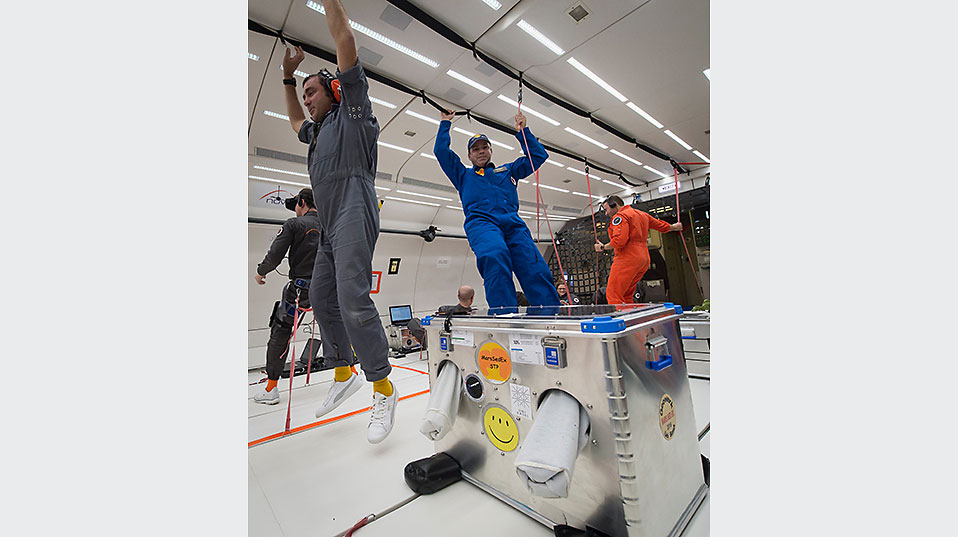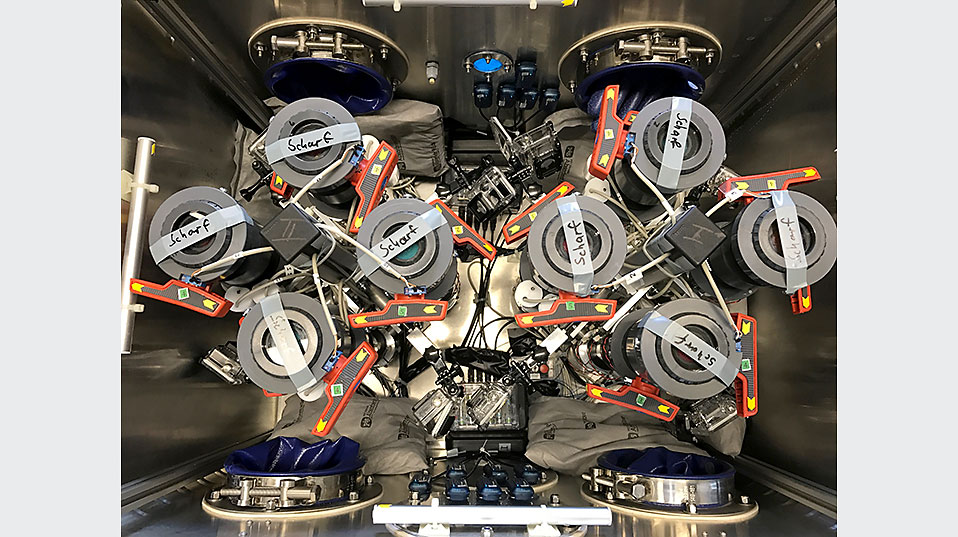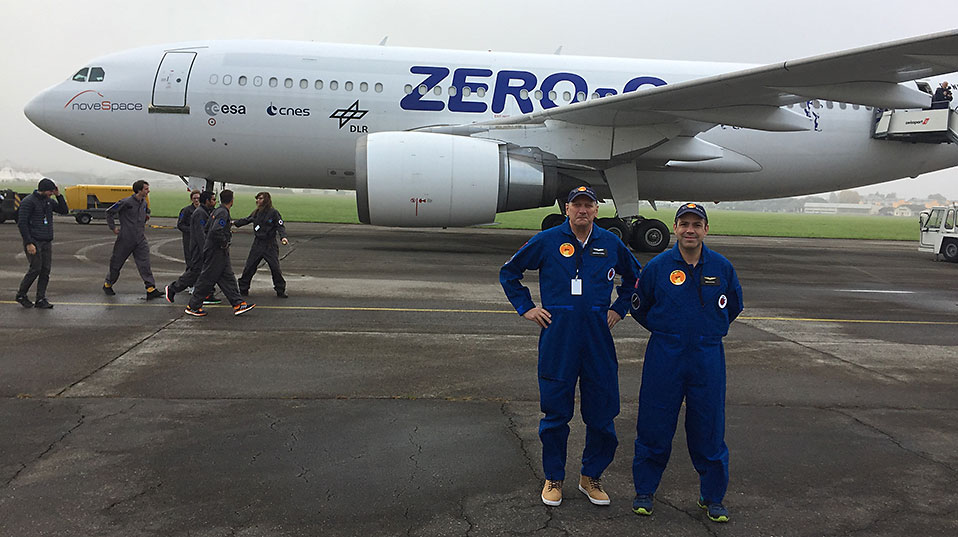Swiss Researchers Fly Into Weightlessness
The dream of weightlessness came true on Saturday for two researchers from the University of Basel. During a parabolic flight, the scientists tested a newly developed measuring device under reduced gravity. The instrument analyzes the deposition of sediments and is intended to support the search for life on Mars.
24 October 2016
Parabolic flights simulate a state of altered gravity. To do so, the plane initiates a series of alternate ascents and descents. This maneuver allows the simulation of weightlessness or reduced gravity, such as the gravity experienced on Mars. It therefore provides researchers with an opportunity to conduct experiments or to test equipment for space flight under realistic conditions. On Saturday, what is now the second parabolic flight took off from Swiss soil. The flight was organized by the University of Zurich.
On board the Airbus A310 Zero-G were a total of six research teams, including two scientists from the University of Basel. During the flight, Prof. Nikolaus Kuhn and technician Hans-Rudolf Rüegg of the Department of Environmental Sciences tested a photometer developed in Basel – this device is used to measure the settling speed of sediments.
How does water flow on Mars?
Gravity on Mars is only around a third of that on our home planet. The weaker gravity means that, among other things, water flows more slowly on Mars than on Earth, which has knock-on effects on the erosion and deposition of sediments.
For the experiment, Nikolaus Kuhn and his team combined a photometer with a settling column in which sediment was allowed to settle during the reduced-gravity flight phases, each lasting around 25 seconds. The aim of the experiment was to determine the flow characteristics of water and sediment on Mars, and the data obtained will now allow existing models for the simulation of sediment transport to be calibrated so that they reproduce the conditions found on Mars.
The results will support the search for potential traces of life on Mars that may have survived in sedimentary rocks. According to the scientists, the data and photometer can also be used on Earth; for example, to gain a better understanding of the dispersal of particle-bound pathogens in bodies of water.
Further information
Nikolaus J. Kuhn, University of Basel, Department of Environmental Sciences, Tel. +41 61 207 36 45, Email: nikolaus.kuhn@unibas.ch




